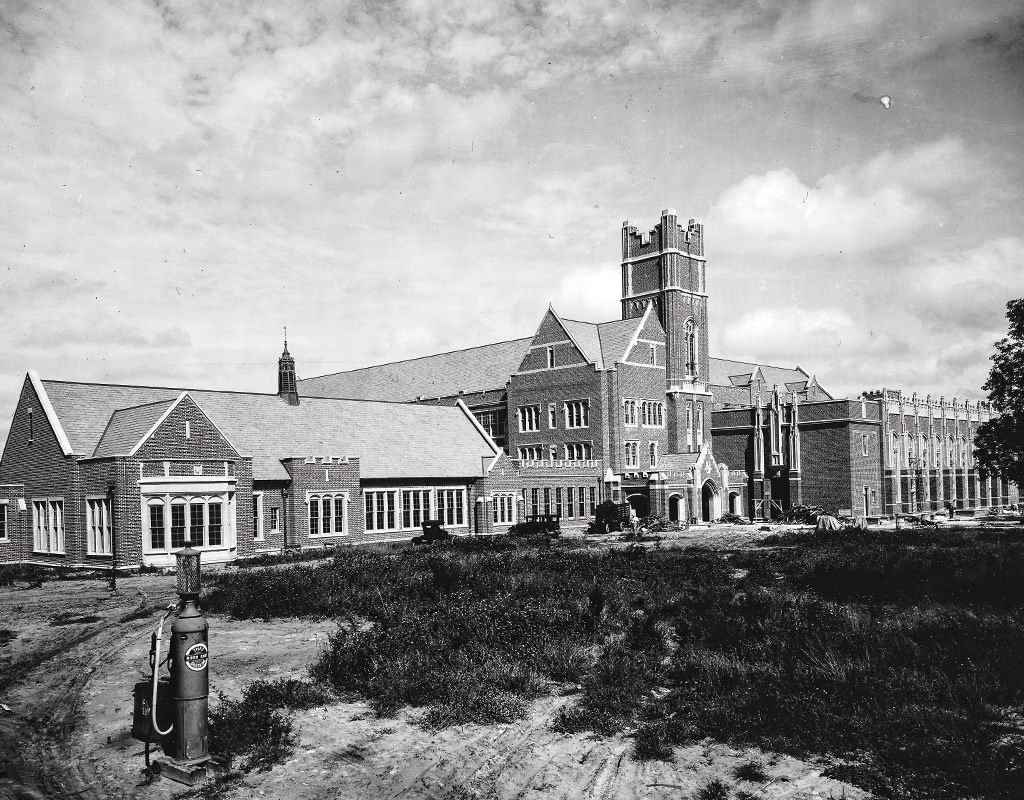“What high school did you go to?” It’s a common question in Tampa whose answer gives special insight about a person.
Today there are 28 public high schools in Hillsborough County — almost double what existed prior to 1984, when there were only eight high schools in Tampa and its immediate suburbs, one in Plant City and four in the unincorporated county. Tampa, and Hillsborough County, have experienced tremendous growth over the past 40 years. In addition to new roads, new communities and new shopping centers, there are also many new high schools. The opening of Armwood and Gaither in 1984 started a flood of new construction and 15 new high schools have opened since that time, the majority of them in unincorporated Hillsborough County.
Four public and two private Tampa high schools stand out among the rest in terms of history and tradition: Hillsborough, Plant, Middleton, Blake, Jesuit and Tampa Catholic. In the era before integration, particularly in the 1950s with the opening of Blake, Hillsborough vs. Plant and Middleton vs. Blake represented the county’s most important and most contested rivalries. Two of the schools, Hillsborough and Plant, have historically significant campuses, while Middleton and Blake both lost their original buildings – and existences – to integration, only to return to the stage in 2002 and 1997, respectively. All six have storied histories and notable alumni.
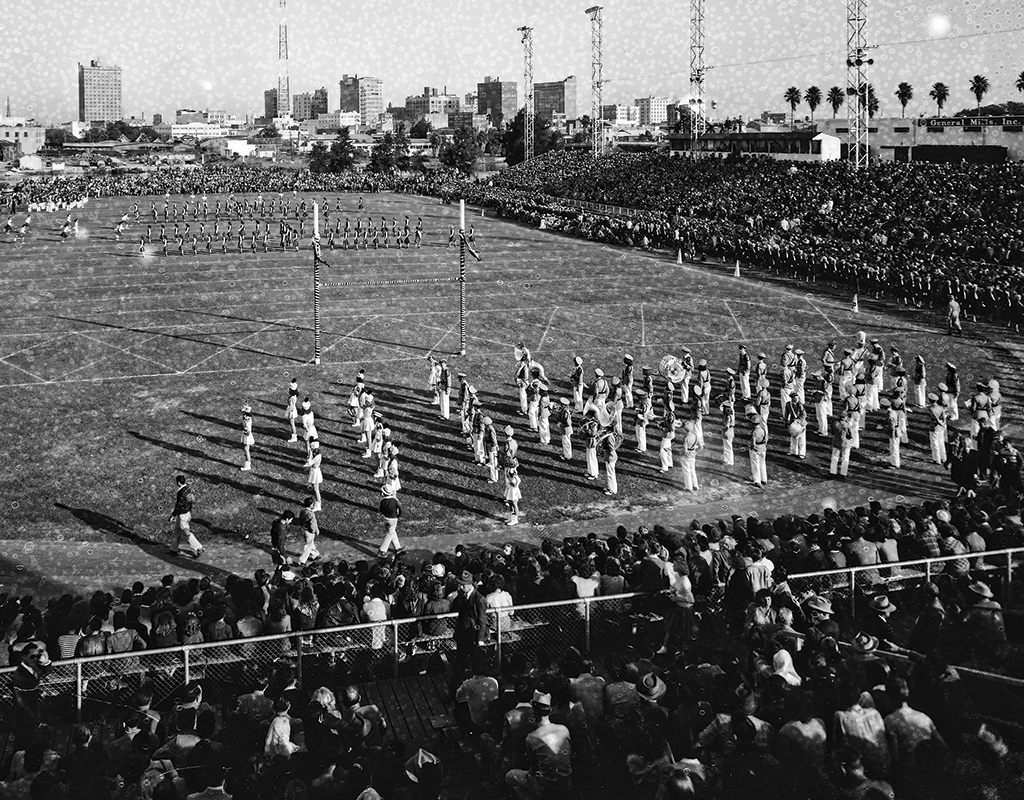 Hillsborough High School
Hillsborough High School
Opened: 1885
Colors: red and black
Mascot: terrier
Notable alumni: Charles Edward Bennett (U. S. Congressman, class of 1927); Cesar Gonzmart (musician and restaurateur, 1937); Slim Witman (musician, 1942); Baldomero Lopez (Medal of Honor recipient, 1943); Dwight Gooden (professional baseball player, 1982); Wanda Guyton (WNBA player, 1984); Michael Ian Black (actor and comedian, 1988); plus five former mayors of Tampa
Hillsborough High School is the city’s — and county’s — oldest high school. Originally called Tampa High School and later Hillsborough County High School, Hillsborough’s first graduating class received its diplomas in 1886. The school was first located on the southwest corner of Jefferson Street and 6th Avenue (now Henderson Avenue) in Tampa Heights. In 1900, the city’s growth prompted the construction of a new high school building on the south end of the same block at Jefferson and Estelle. The city soon outgrew that building as well and plans were started to construct a new high school — built of brick instead of wood — on the western side of Tampa Heights. The new Hillsborough County High School opened on Highland Avenue at the beginning of the school year in 1911.
Despite the belief at the time that this high school building could handle the population growth of the county for years to come, it did not take too long before the need for an even larger school became apparent. In 1925, land was secured in the Seminole Heights neighborhood for a school that could accommodate over 2,000 students. The new Hillsborough High School was a brick masterpiece, designed in the Gothic style by Francis Kennard.
The new Hillsborough High School building opened on Central Avenue in the heart of Seminole Heights in time for the new school year in 1928. The school’s shift from eastern Tampa Heights to western Tampa Heights then up to Seminole Heights over the course of 30 years tracked with the pace and direction of Tampa’s growth (at least as far as the city’s white population was concerned).
The planning decisions of the 1920s indeed ensured that Hillsborough High School would be large enough to handle the growth of the city.
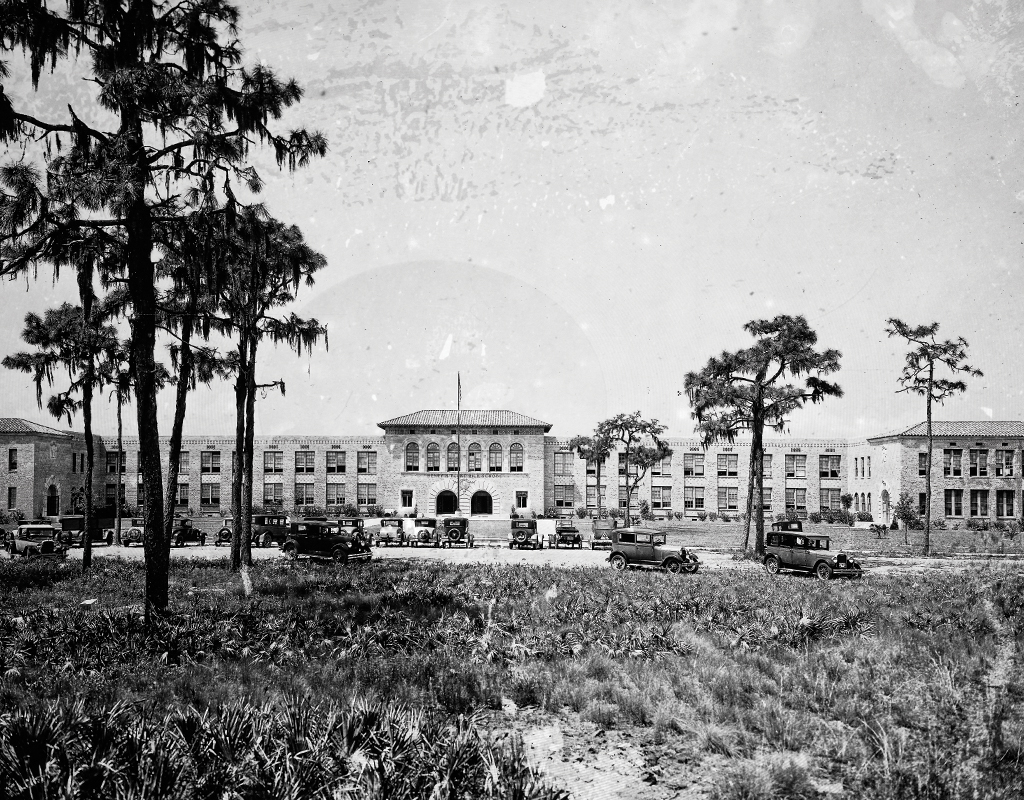 Henry B. Plant High School
Henry B. Plant High School
Opened: 1927
Colors: black and gold
Mascot: panthers
Notable alumni: Sam Gibbons (U. S. Congressman, class of 1938); Stephen Stills (musician, 1963); Leo Gallagher (comedian, 1964); Wade Boggs (Hall of Fame baseball player, 1976); Dreama Walker (actress, 2004); Pete Alonso (professional baseball player, 2013); Christian Watson (professional football player, 2017)
In the Palma Ceia area, another fast-growing part of Tampa’s suburbs, a new high school opened in 1927. Henry B. Plant High School was named in honor of the industrialist who brought the first railroad to Tampa in 1883.
The story of Plant High begins with the Florida land boom and the spectacular growth of Tampa and the surrounding area in the early 1920s. Between 1920 and 1930, the city’s population doubled, reaching 100,000 people just before the new decade began. The county’s population, which at the time included the Palma Ceia area, grew by 40% to just over 52,000 people (exclusive of the City of Tampa’s population). Much of that growth was in the suburbs of what is now South Tampa, and Plant’s location in the middle of the Interbay Peninsula placed it within close proximity to that growth.
As was the case with Hillsborough, the county school board looked to a locally famous and influential architect to design the new school. Franklin O. Adams blended blonde brick with the prevailing Mediterranean style to design a beautiful two-story edifice. The school, promoted as the largest in the state at the time, included everything from science labs to an auto shop, along with plenty of room for athletic fields. Vera Avenue, today’s Dale Mabry, passed by the school along its western boundary with nothing but a grassy field and pine trees between the street and the campus buildings.
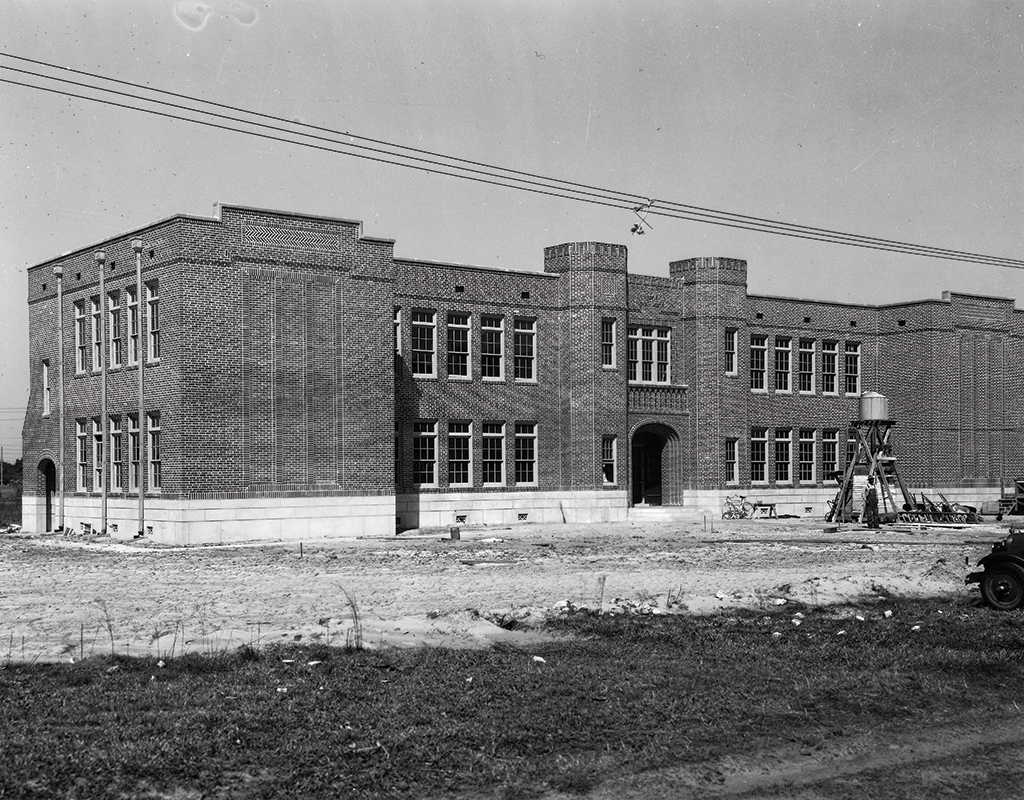 George S. Middleton High School
George S. Middleton High School
Opened: 1935
Colors: maroon and gold
Mascot: tigers
Notable alumni: Walter Lee Gibbons (professional Negro League baseball player, class of 1946); Delores Aldridge (sociologist, 1959); Gwen Miller (politician, 1953); George Edgecomb (first African American judge in Hillsborough County, 1960); James Hargrett (politician, 1961); Les Miller (politician, 1969)
African American students were not allowed to enroll at Hillsborough or Plant (or almost any other white school) until the county school system fully integrated in 1971. Prior to that time, Middleton High School and Blake High School were the only public high school options for Black students living in and around Tampa (with two exceptions: George Washington Carver school served grades 6-12 during the 1930s and ‘40s, and the Don Thompson Vocational High School during the late 1940s and early ‘50s).
Middleton High School is the older of the two and it was the first traditional high school for Black students in Hillsborough County. Originally located on 22nd and Chelsea streets in the East Tampa neighborhood of Belmont Heights, Middleton opened in 1935. Named in honor of noted business, education and civic leader George S. Middleton, the school building was designed by famed Tampa architect M. Leo Elliott and in spite of the inherent racism of the era, the school board spent a considerable amount of money building and equipping Middleton. It was state of the art for its time and it mostly lived up to the dark standard of “separate but equal” when compared to Hillsborough and Plant.
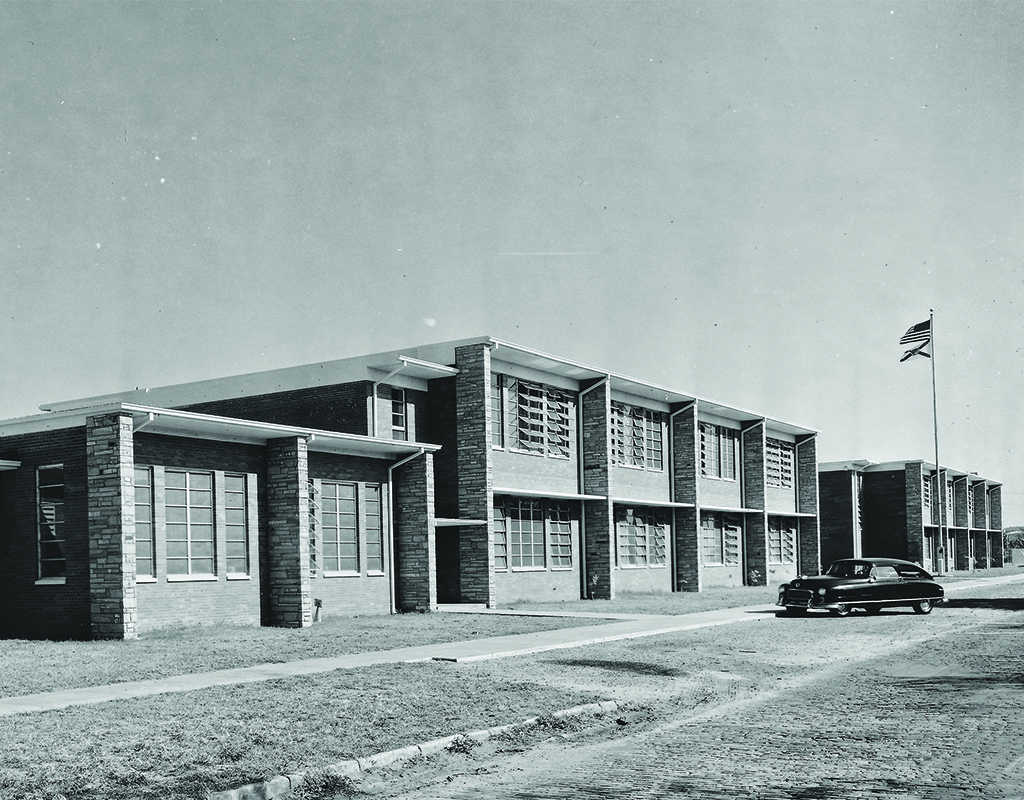 Howard W. Blake High School
Howard W. Blake High School
Opened: 1956
Colors: black and gold
Mascot: yellow jackets
Notable alumni: Earl Edwards (professional football player, class of 1964); Leon McQuay (professional football player, 1968); Ryan Davis (professional football player, 2007); Isaiah Rodgers (professional football player, 2016)
Middleton’s local rival was — and still is — Blake High School. Named for educator Howard W. Blake, the school opened in its original location on Spruce Street along the Hillsborough River in West Tampa in 1956. While most of the school was newly built, it did incorporate some of the structures from the old Don Thompson vocational school. Much like the opening of Plant in 1927 showed the growth of Tampa’s white population, Blake’s opening demonstrates the growth of Tampa’s Black population. In addition, it reflects the number of African American students in the West Tampa and northwest Hyde Park (Dobyville) neighborhoods.
Among the unintended consequences of school integration in Hillsborough County was the reassigning of Middleton and Blake as junior high schools. Both buildings still exist: Middleton is now Ferrell Middle School and Blake is Stewart Middle Magnet School. Their new homes are in the same neighborhoods as their original locations: Blake is on North Boulevard along the Hillsborough River and Middleton is on 22nd Street and Osborne Avenue.
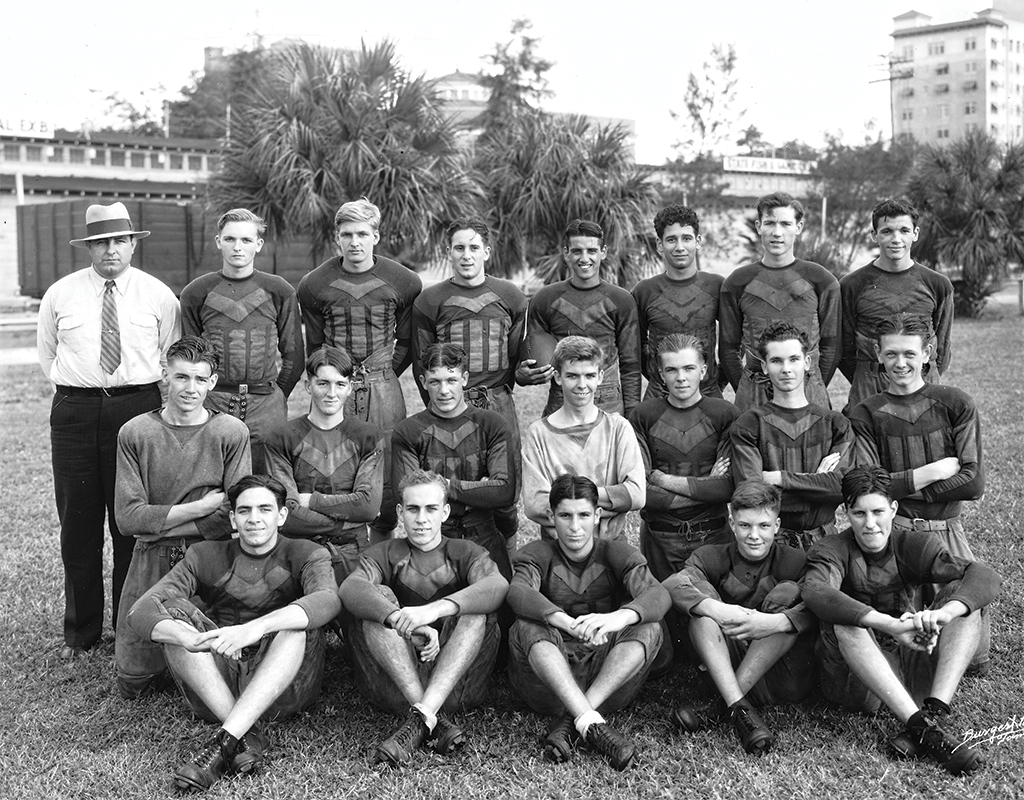 Jesuit High School
Jesuit High School
Opened: 1899
Colors: blue and white
Mascot: tigers
Notable alumni: Al Lopez (Hall of Fame baseball manager, class of 1927); Thomas Galen, Jr. (U.S. Army Green Beret, 1950); Richard Gonzmart (restaurateur, 1971); Rich McKay, (NFL executive, 1977); John Kovac (physicist, astronomer, 1988); Bert Kreischer (comedian, 1990); Lance McCullers, Jr. (professional baseball player, 2011); Dane Belton (professional football player, 2018)
One of the oldest rivalries in Tampa is actually between two private high schools – Jesuit and Tampa Catholic. As is the case with the other schools profiled here, Jesuit and Tampa Catholic personify the old adage that familiarity breeds contempt.
Jesuit High is the older of the two schools. It was founded as the all-male Sacred Heart College in 1899 and was located next to Sacred Heart Church on Florida Avenue in Downtown Tampa. The school was founded by the Jesuit priests who were attached to the church. Enrollment was low at first, but it grew steadily during the ensuing years. In 1940 the school was renamed Jesuit High School to honor the founding Jesuit Order, which was celebrating its 400th anniversary that year.
Following World War II, changes in Downtown Tampa along with the post-war population growth prompted the school’s leadership to seek a larger campus. They acquired property on North Himes Avenue, what was then the northern edge of Tampa, and opened the new campus in 1956. The extra space allowed for more students, a better school experience and athletic fields for physical education and athletic competition. Jesuit has more than 8,000 alumni and the number of second, third and even fourth generation students is a testament to the quality of the Jesuit experience.
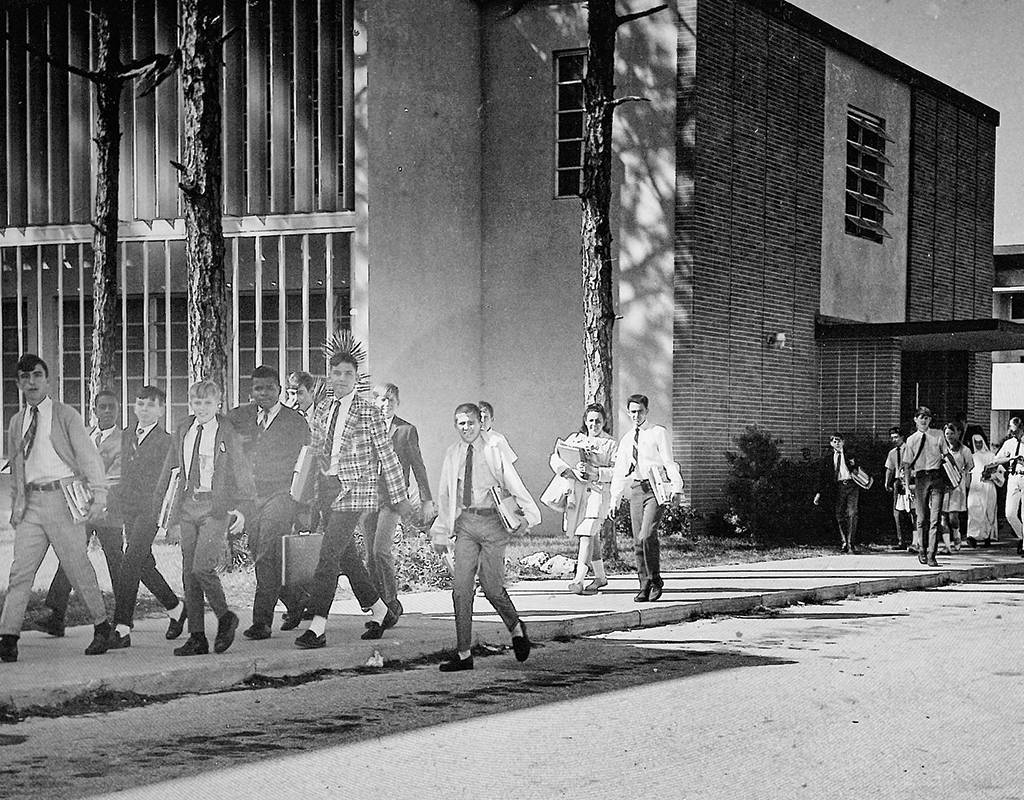 Tampa Catholic High School
Tampa Catholic High School
Opened: 1962
Colors: green and white
Mascot: crusaders
Notable alumni: Lance McCullers, Sr. (professional baseball player, class of 1982); Tino Martinez (professional baseball player, 1985); Darrell Jackson (professional football player, 1996); JoAnna Garcia (actor, 1997); Channing Tatum, (actor, 1998)
Like Blake, Tampa Catholic High School was founded as a result of the city’s post-World War II population boom. The school opened in 1962 with only 9th and 10th grade classes. That first year was spent on the Christ the King campus, but by the start of the 1963 academic year the school had moved to its new campus on North Rome, just north of MLK Boulevard in the Wellswood neighborhood.
Tampa Catholic’s location has accommodated the school’s continued growth. Starting even before its first graduating class in 1964 to today, Tampa Catholic has provided a co-educational Catholic school experience that cannot be found at the all-male Jesuit High School or the all-female Academy of the Holy Names on Bayshore Boulevard.
All of these schools have a few things in common. Most importantly, at least for the purposes of our opening question, is that they are all located in neighborhoods and small communities. It is that neighborhood identity — as much as the football team or the school colors — that prompts the question about where someone went to high school. New schools meant new rivalries, from the opening of Jefferson High School (in the 1911 Hillsborough High School building) in 1939 to the new schools in Riverview (Spoto, 2006), Dover (Strawberry Crest, 2009) and Lutz (Steinbrenner, 2009).
Rivalries are the natural consequence of the creation of new nearby schools, whether it’s classic ones like Hillsborough and Plant, Middleton and Blake, and Jesuit and Tampa Catholic, or newer ones like Leto and Alonso. Those rivalries play out on the neighborhood streets as much as between the hash marks on the gridiron. The Heights vs. South Tampa, East Tampa vs. West Tampa… each one is a battle for sports supremacy and local bragging rights.
Rodney Kite-Powell is a Tampa-born author, the official historian of Hillsborough County and the director of the Touchton Map Library at the Tampa Bay History Center, where he has worked since 1995.


